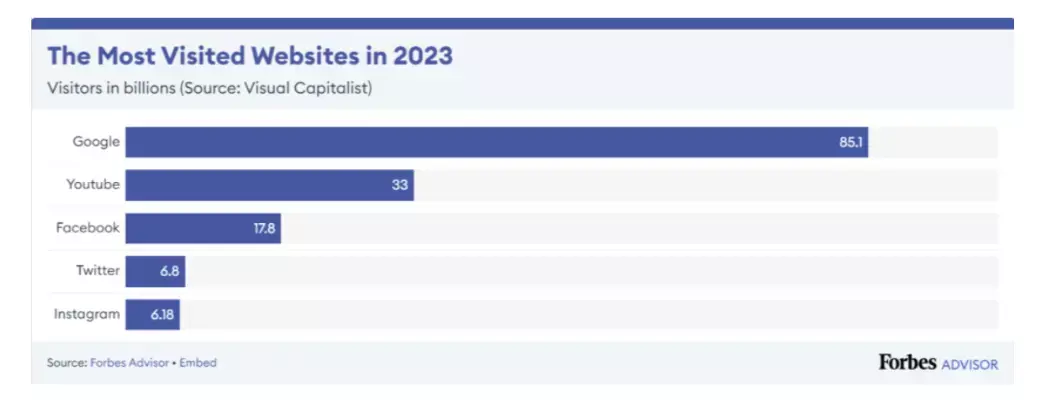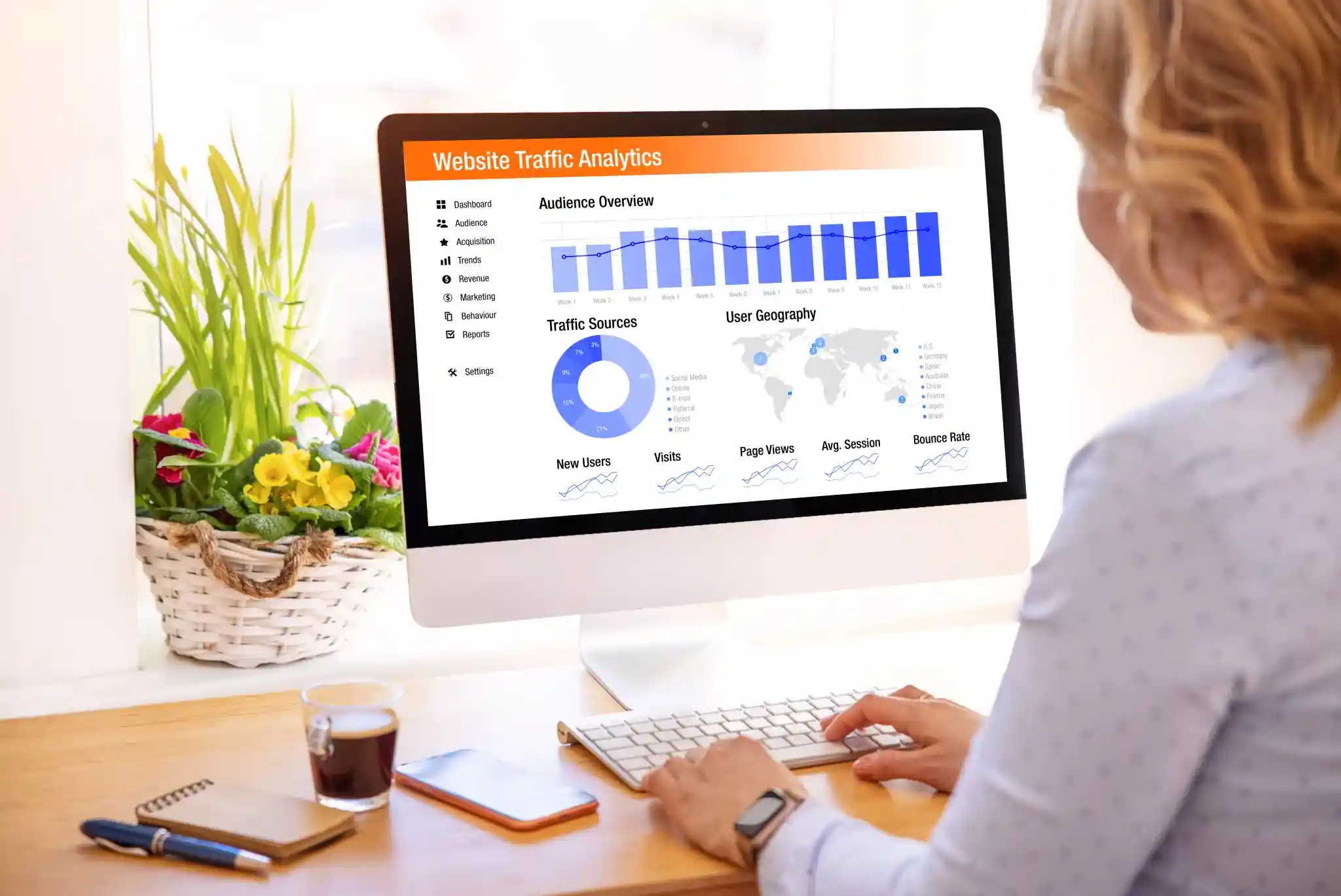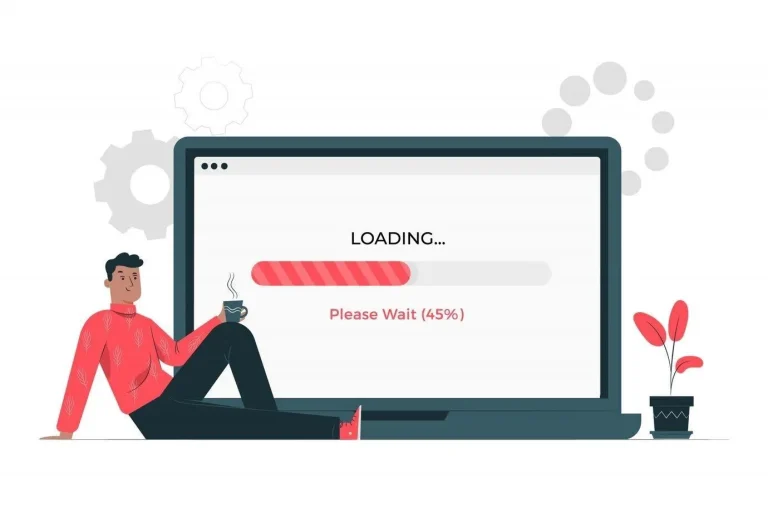Building website traffic must be a priority for publishers. The trickiest part about building web traffic is that it involves diverse tactics, such as — Content optimization, Google Algorithm Updates, and SEO guidelines that are always evolving. This means you must be more cautious about your strategy to increase website traffic.
In the vast digital space, where there are about 1.13 billion websites (as of 2023), website owners compete for attention, and capturing a steady stream of website traffic is the holy grail for publishers.

That’s why we prepared this comprehensive 101 guide to equip you (publishers) with expert strategies, tactics, and actionable tips to boost website traffic and attract more visitors.
Bonus tips are there to keep you ahead of the competition.
Table of Contents
- What Is Website Traffic?
- Drive Traffic to the Website with Content
- Increase Traffic to the Website with Content Types
- Get Traffic to Website with SEO Techniques
- Shootup Your Website Traffic with Social Media
- Few Other Means to Increase Traffic to the Website
- Tools to Track and Improve Website Traffic
- In the End
- FAQs
What Is Website Traffic?
Website traffic refers to the number of visitors who visit your website and interact with its pages and content.
Each visitor represents a session during which they navigate through your site, view different pages, and potentially take actions such as purchasing, submitting a form, or engaging with your content. When measuring website traffic, consider the number of sessions or unique visitors over a specific period.
Why Does Website Traffic Matter?
Website traffic is important for publishers as it directly impacts their online presence and success.
- High website traffic can support advertising revenue and monetization efforts. With more visitors, you can attract advertisers willing to pay for ad placements on your website, generating additional income.
- Additionally, higher traffic can increase the effectiveness of affiliate marketing, sponsored content, and other monetization strategies.
- High website traffic enables you to build and engage with a larger audience.
- By providing valuable and engaging content, you can foster a community of loyal users who interact with your brand and contribute to its growth.
Now you know what is website traffic and why it matters for your growth. Next, let us see how you can increase the website traffic through various means.
Drive Traffic to the Website with Content
The basic – right! High-quality and valuable content is a magnet for attracting visitors to your website. Optimizing your website content can improve its visibility, engage your audience, and increase the chances of driving targeted traffic.

Here’s why the significance of content optimization is high:
Audience engagement
Well-crafted content captures the attention of your target audience, encourages them to explore further, and keeps them engaged. It helps establish your credibility and authority in your niche. Here’s how to improve user engagement.
Search engine visibility
Being visible on search engines such as Google is crucial. 93% of websites drive traffic from Google search engines, such as Google, which values high-quality content that provides value to users. Creating informative, relevant, and unique content increases your chances of ranking higher in search engine results, driving organic traffic.
Social sharing and referrals
Valuable content has the potential to go viral and be shared across social media platforms or referenced by other websites. It amplifies your reach, attracts new visitors, and generates referral traffic.
Brand reputation and trust
Quality content builds your brand’s reputation and fosters trust among your audience. It showcases your expertise, reliability, and commitment to delivering value, encouraging repeat visits and brand loyalty.
💡 Pro Tips for Publishers
- Create original content: Readers are more likely to visit a site and return when they find personalized content on your website. Also, your content should always be original, engaging, and written in your voice.
- Target topics with high traffic potential: Identifying relevant keywords to your content. And using them throughout your website can rank your web pages higher in search terms. It can help you attract more visitors and drive traffic.
- Focus on evergreen topics: Create content around topics that interest your audience. The content on evergreen topics will accumulate traffic over time, especially if you repurpose it regularly.
- Write eye-catching headlines: The headlines of your content pieces are the first thing people see in Google Search results. Your audience may not read a blog post without a captivating heading, even if it has high traffic potential and in-depth information.
- Create pillar pages for topics: Create pillar pages and blog posts covering all topic elements. They help establish a higher Google ranking and boost your website’s organic traffic.
Then, create “cluster content,” the supporting content you develop around your pillar pages. You can search for all possible sub-topics/keywords for each pillar page topic.
Increase Traffic to the Website with Content Types
Content plays a vital role in attracting and driving website traffic. By employing effective content creation strategies, you can establish your brand as an authority, engage your audience, and encourage them to visit your website.
So, if you are skipping this point, you can’t do any other strategies without high-quality content. Here’s how different types of content can be game-changing for your website traffic:
Create a blog page
Maintain a blog on your website where you regularly publish informative and engaging articles—share industry insights, best practices, and valuable tips that cater to your audience’s interests. Optimize your blog posts with relevant keywords to attract organic traffic.
Create shareable content
Craft compelling and shareable content that resonates with your audience. It can include infographics, videos, guides, podcasts, or interactive content that offers value and encourages social sharing. Shareable content has the potential to go viral, increasing your website’s visibility and driving traffic.
Do guest posting
Collaborate with authoritative websites or blogs in your industry to contribute guest posts. It allows you to tap into their audience and attract new visitors to your website. Ensure your guest posts provide unique and valuable insights that align with the host website’s audience.
Repurpose content
Extend the reach of your content by repurposing it into different formats. For example, transform a blog post into a video or create an infographic based on research findings. Repurposing allows you to cater to different audience preferences and maximize exposure.
Do content promotion
Actively promote your content through various channels, such as social media, email newsletters, and online communities. Leverage social media platforms to share your content, engage with your audience, and encourage them to visit your website for more valuable insights.
💡 Pro tips for publishers
- Do a competitors analysis: Keeping an eye on your competitors’ content can be a great source of information for topics they cover, keyword ideas, the content they create, and more. But just be sure you’re always creating your unique content.
- Attention to traffic trends: You must determine which sources provide the most traffic and conversion rates. This is how you can make a better strategy for content creation.
- Publish your content at the right time: You can also look at your analytics to find the times of the day, week, and month that get the most engagement from your audience. Then, you can post or share your content links at that time only.
- Publish your content regularly: Publish content that aligns with targeted keywords and search queries improves your website’s visibility in search engine results, driving organic traffic.
- Create and display ads on your website: Putting some informative ads on your website will help boost traffic.
Get Traffic to Website with SEO Techniques
Search Engine Optimization (SEO) is crucial in improving website visibility and driving organic traffic. Implementing essential SEO techniques can enhance your website’s chances of ranking higher in search engine results and attracting targeted visitors.

Image Source: Ahrefs
Here are some of the aspects of SEO on which you should focus:
On-page optimization
On-site SEO involves the optimization of various aspects of the website. Here are some essential techniques to focus on:
- Optimize titles: Craft descriptive and keyword-rich titles for your web pages. Each title should accurately represent the content on the page and entice users to click through from search results.
- Meta descriptions: Write compelling meta descriptions summarizing the page’s content. Incorporate relevant keywords and ensure the description encourages users to visit your website.
- URL structure: Optimize your URLs to be descriptive and keyword-friendly. A clean URL structure improves readability for both users and search engines. Avoid lengthy or confusing URLs and include relevant keywords where appropriate.
- Heading tags: Structure your content using proper heading tags (H1, H2, etc.). Heading tags improve the readability and organization of your content and signal the importance of different sections to search engines.
- Keyword optimization: Conduct thorough keyword research and strategically incorporate relevant keywords throughout your content. Focus on using keywords naturally and in a way that enhances the user experience.
- Content quality: Produce high-quality, valuable content that addresses the needs and interests of your target audience. Well-researched, informative, and unique content will attract links and gain visibility in search results.
Off-page optimization
Off-page optimization refers to strategies implemented outside your website to improve its search engine rankings. Here are a few effective off-page optimization techniques:
- Building backlinks: Earn high-quality backlinks from reputable websites in your industry. Backlinks act as votes of confidence for your content and can significantly impact your search engine rankings. Focus on obtaining natural, relevant, and authoritative backlinks.
- Online directories and listings: Submit your website to relevant online directories and listings. It can improve your website’s visibility in search results and drive targeted traffic.
- Influencer outreach: Collaborate with influencers or industry experts to amplify your content reach. Their endorsement and promotion can expose your website to a wider audience, driving traffic and potential backlinks.
- Online reputation management: Monitor and manage your online reputation by actively engaging with your audience, addressing feedback, and building a positive brand image. A positive online reputation can increase visibility and trustworthiness in search results.
💡 Pro tips for publishers
- Improve website design: Built your website on a platform with an aesthetically correct design. Your website should match your brand goals. Keeping an eye on core web vitals and small details will make your website stand out.
- Use SEO tools for traffic analysis: Tools like Google Analytics, Search Console, Ahrefs, Semrush, and SimilarWeb are the most popular ones that offer comprehensive insights into your website traffic, traffic sources, search queries, competitor analysis, and user behavior. Most publishers already use them.
- Optimize for LSI keywords: Latent semantic indexing or LSI keywords are associated with your main keywords and are seen as semantically relevant by Google.
- Adding share links: Add “Share Triggers” to your website content, blog posts, and articles, as it significantly improves the chances that readers will share your content on different platforms. Integrating the “Share Triggers” into your posts and improving your content visibility across platforms is also easy.
- Reduce bounce rate: As per Google’s RankBrain algorithm, it is a crucial ranking factor. Working on content search intent, quality, and SEO factors such as meta description, CTAs, internal links, website page load speed, mobile optimization, and other factors contributes to a reduced bounce rate.
Shootup Your Website Traffic with Social Media
Social media platforms, such as LinkedIn, Facebook, Instagram, and Twitter, are great places to get high-quality traffic on your website that converts. Social media significantly impacts website traffic by offering reliable platforms to distribute content directly to targets and engage them.
 Image source: Wyzowl
Image source: Wyzowl
So why don’t you take advantage of it? Here’s how you can leverage social media to increase website traffic:
Focus on the relevant content distribution that drives the web traffic
Create and share informative and relevant posts, blog posts, articles, videos, and other valuable content on social media platforms. Craft compelling captions, use eye-catching visuals, and include relevant hashtags to increase visibility and attract clicks to your website.
Drive traffic by distributing content on your target active social media
The key is understanding the channels where most of your target audience is active—and creating engaging social posts that get them to your main site.
Similarly, actively engage with your followers by responding to comments, answering questions, and participating in discussions. Encourage conversation, seek feedback, and build a community around your brand. Engaged followers are more likely to visit your website and explore your offerings.
Include clear call-to-action to your social media posts
Incorporate clear and enticing CTAs in your social media posts. Encourage your audience to visit your website for more information, exclusive offers, or to access valuable resources. CTAs can significantly impact click-through rates and drive traffic. Let’s see how to add links to your social media posts.
- For video content, you can add links to the captions of your videos and where the video ends.
- For LinkedIn posts, you can put the link directly in the caption. This will also generate a link preview with a clickable image.
- It’s easy to include clickable links to your Facebook posts. You need to simply paste a link into the text field of a new Facebook post. It automatically previews the link by showing images from the target web page.
- For Twitter, adding CTAs in your tweets will generate an automated preview of images that, when clicked, redirect the user to the linked web page.
- You can add clickable links and relevant CTAs to your feed posts and reels on Instagram. Creating link stickers in your Instagram Stories is also possible.
Another way to drive website traffic from social media is to encourage people to share your content links within their networks. For this, you can emphasize content creation that encourages sharing, such as content on engaging topics and with images.
Increase website traffic through social media ads.
Consider running targeted social media advertising campaigns to reach a broader audience and drive traffic to your website. Utilize demographic targeting, interest-based targeting, and retargeting options to maximize the effectiveness of your ads.
💡 Pro tips for publishers
- Publish as per E-A-T guidelines: Google’s E-A-T regulations directly impact your content creation strategy on social media and the website. To optimize your social media content per E-A-T guidelines, you should provide clear and accessible information, publish only verified information, stats, news, facts, and expert opinions, and your content should educate your readers.
- Build brand awareness: Creating content that promotes brand awareness on social media is the way you can increase your traffic and fan base. Readers are likelier to click on your social media posts if you have a large following and brand mentions.
- Consistency is the Key to success: Digital publishers should never neglect the importance of content, branding, and design in their posts. People become less likely to spot their content and brand if their content fails to stand out. When people see your posts regularly on social media, they can easily associate them with your brand, which may increase their trust in you.
- Work on word-of-mouth strategy: Word-of-mouth (WoM) is when people, friends, and associates talk about your brand. You can make your social media content the center of their attention by creating posts around events, webinars, expert roundups, polls, video content, Q&A posts, and interviews.
- Adding hashtags to your posts: Hashtags are the most important for social media platforms, as they make your content easily found by interested people. You must add relevant hashtags that rank high in traffic to your social media posts.
Few Other Means to Increase Traffic to the Website
Add short videos to your content:
Short-form videos are very popular now. So, consider adding short-form videos to tutorials, product information, guides, or other content types. You can repurpose content into videos easily with the tools online.
You will get even more traffic if you share it on social networks like TikTok, Instagram, Facebook, Twitter, and YouTube.
Strengthen the website security:
Website security is one metric that matters in delivering a good UX to your website users and driving traffic. You need a secure, reliably structured, and high-performing website.
The security breaches due to open-source CMS and outdated plugins severely harm website traffic and user loyalty. So, check every security aspect of your website on time and look for a publishing platform that gives 24/7 support.
Make your site mobile-friendly:
The two reasons why you should make your site mobile-optimized are:
- More than half of your site traffic comes from mobile.
- Google has strict guidelines to check whether or not your site is mobile-optimized. By doing this, you can also be sure your site will result in Google’s mobile search.
So, use technology that does not consider mobile experience as a second thing we can add later. Utilize CMS that gives equal priority to desktop and mobile experience to have an advanced, quick, and reliable mobile interface for repeat visits.
Work on sitemap:
Sitemap is the file that lists the web pages on your site. This will convey to Google and other search engines that your site is organized, which helps in crawling and indexing intelligently.
Metadata is the valuable information on your sitemap, like how often you update a site, when the particular web pages are updated, and the importance of a particular webpage compared to other URLs.
The properly linked site maps aid Google’s web crawlers discover most of your site. You can use the Google search console to set up your sitemaps.
Remove bad content from your site:
If you have a several-year-old website, you are highly likely to have a chunk of content that is not useful. So, periodically perform a clean-up to eliminate unuseful content to ensure that Google is indexing the best version of your site. Some of the bad content examples that you can remove are:
- Duplicate content that contains the same context in different URLs
- Short content that doesn’t meet the eligibility of quality content, like less value. Mostly, Google will not index or rank such content unless it is well-written and SEO-optimized.
- Check typos and grammatical errors in your content thoroughly because Google despises typo errors, and it will assume the content quality is not good. Grammatical errors are unacceptable.
Conduct webinars:
People who love your content want more from you; webinars are an excellent way to impart wisdom, discuss with like-minded people, and get new ideas. Webinar promotions through social media and frequent webinar hosting on trending topics are great sources of high traffic.
Drive traffic with the online community:
Online communities and forums are the best way to get traffic by connecting people and letting them discuss and deliver their thoughts. You must add a commenting system from any third-party platform like Facebook or create a dedicated online community.
Let users of your community post questions and answers on everything they are curious about. Also, manage the community with minimum standards and ensure they are met diligently by every community member.
Tools to Track and Improve Website Traffic
SEO tools to analyze SERP
SEO tools are an all-in-one platform that lets you do keyword research, check the ranking and traffic of each page and blog, backlink analysis, SERP analysis, identify content gaps, run competitor analysis, and more
Semrush, Ahref, WordStream, Google Search Console, Ubersuggest, and Mozpro are a few of the all-in-one SEO suite tools you can use.
Link audit
The link audit tools track and optimize the link pointing at your website. It analyzes backlinks in your website and finds opportunities to rank and get high traffic. Majestic, Serpstat, Ahrefs, and Semrush are a few of the best link audit tools.
Website audit tools
The site audit tool helps you audit your website to find opportunities to improve ranking and traffic. The reports on these site audit tools give insights and actionable suggestions to improve your score.
WooRank, Moz on-page grader, and SEO site checkup are some good site audit tools.
Web analytic tools
The analytic tools help you to know more about your users, like which country they come from, which page is liked by most users, how much time they spend on each, and everything else. Google Analytics is the topmost tool marketers use, and it is free.
Open Web, Adobe, Matomo, and Hotjar are a few of the other best analytic tools.
Other important tools: Canva and Slideshare are tools you can use to make visual elements like graphs, illustrations, images, and infographics. You can use Hubspot’s Blog Topic Generator to generate blog ideas and tools like Mailchimp and Litmus to help in email marketing.
In the End
Driving website traffic is essential for online success, and implementing effective strategies can help you attract, engage, and convert visitors into loyal customers. Following the discussed techniques can help optimize your website and increase its visibility, organic traffic, and conversions.
Continually evaluate your website’s performance, analyze user behavior, and make data-driven decisions to refine your strategies. Stay updated with industry advancements, how to protect your website, algorithm changes, and emerging tactics to maintain a competitive edge.
Now, armed with this knowledge, go ahead and take proactive steps to boost your website traffic, expand your audience, and achieve your online goals.
FAQs
How can I track the sources of my website traffic?
The publishers can use Google Analytics to determine which sources or pages provide the most traffic and the best engagement rate.
What are the best approaches to increase website traffic?
Some of the best ways to increase website traffic are – content optimization, improving your website design, working on your online presence, and displaying ads.
How to increase traffic to your website using social media?
Create and promote on all popular social media channels using relevant hashtags. Not only will this drive traffic to your site, but you will also likely get quality backlinks.























